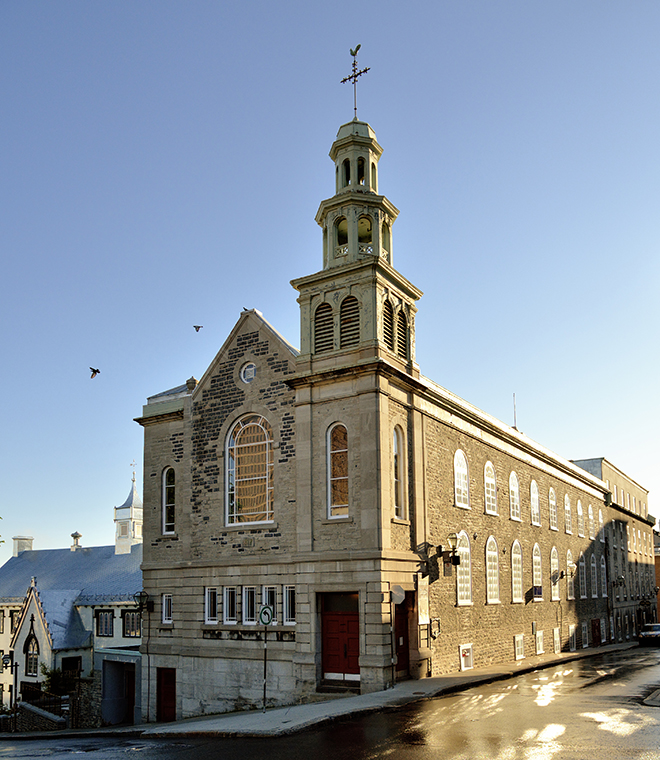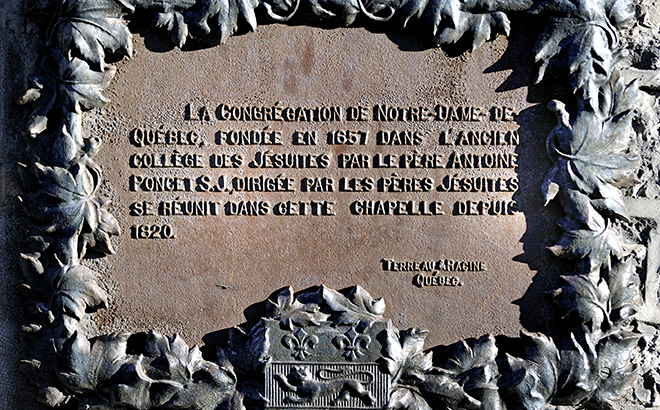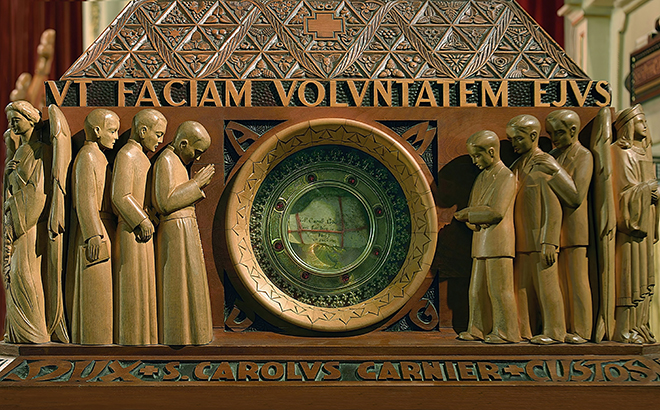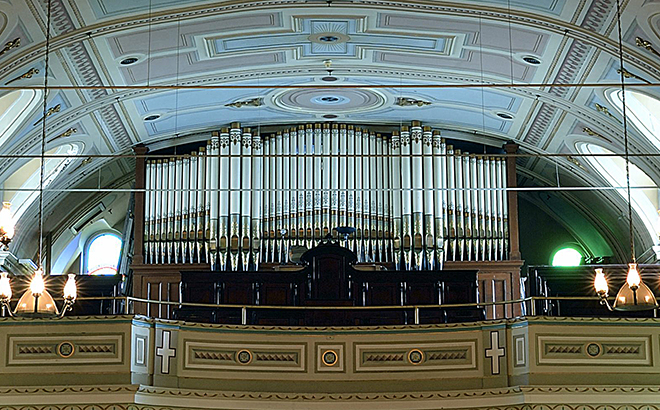
The history of the Jesuits’ chapel began in 1817 when a parcel of land was bought to build a chapel destined to the masculine Congregation de Notre-Dame. Founded by the Jesuits during the French Regime, the Confraternity welcomes young laymen wishing to spread the Marian devotion. In 1818, architect François Baillairgé traced the plans of the chapel and construction began.
The Jesuits arrived in Quebec in 1625 and founded the first college in 1635. They are expelled from their college in 1760, at the beginning of the British Regime, when they were forbidden from recruiting. The Order of the Jesuits became extinct in 1800 with the death of the last member, Father Jean-Joseph Casot. Pope Pius VII recreated the Order in 1814 to the whole of the Catholic Church. The Jesuits returned to Montreal in 1842 and from there, returned to all of Canada.

The Jesuits return to Quebec during the summer of 1849 at the request of the Bishop of Quebec, Msgr. Pierre-Flavien Turgeon, to counterbalance the growing influence of Protestants, especially in the Upper-town, which was becoming Anglicized and where the pastors were high-level intellectuals. The bishop invited them to take charge of the chapel of the Congregation, which had been served by the priests of the Notre-Dame parish.
In 1907, during the celebrations of the 250th anniversary of the founding of the Congregation, the chapel was ceded to the Jesuits.
Witness to the activities of the Jesuits, this chapel contains an important religious heritage. Its works of art, while having a spiritual dimension, are a real catechesis through images and allow you to discover the savoir-faire of artists and craftsmen.

Near this place of worship, the Jesuits took possession of a house in 1856. Major changes were made there in 1930, including the shape of the roof to protect pedestrians from snowfall. In 1949, for the 300th anniversary of Martyrs Brébeuf, Lalemant, Garnier, and Chabanel, the chapel’s galleries are removed, with the exception to the organ’s, and the decoration of the apse is remodeled to better recall the immolation of the Saint Canadian Martyrs. Today, the chapel is still dedicated to them.

To store the precious relics of Saint Charles Garnier, the sculptor Gérard Marchand produced a magnificent wooden box, on which we can see multiple sculpted figures. On the front side, Jesuits and young men pray before the relics of this Saint Canadian Martyr. The other sides show scenes from the missionary life of the Jesuit Charles Garnier with the Amerindians. At the four corners of the box, angels seem to stand guard.
Originally, this reliquary was kept at Saint-Charles-Garnier College, located on Saint-Cyrille Boulevard, now René-Lévesque. Around 2008, when the Jesuits left the college residence, the reliquary was moved to this chapel.

The organ of the Jesuits’ chapel was built in 1887 by Napoléon Déry, an artisan organ builder living in the Faubourg Saint-Jean in Quebec. This wind instrument is unique by its playing of the human voice, less common in Canada at that time on instruments of this size.
Originally, this organ had mechanical action and had 16 stops spread over two manuals and a pedalboard. At its inauguration by organist Clodomir Delisle on October 16th, 1887, several important characters were present, including the wife of Sir Adolphe Basile Routhier, author of the text of the hymn “O Canada”.